(Last updated on 13/10/2025)
Trujillo is one of Extremadura’s main tourist destinations. Located in the Miajadas-Trujillo area of Cáceres province, this small town features one of Spain’s most beautiful squares and an old town full of fine historical buildings.
This destination mini-guide includes what you need to know to visit Trujillo – from the main sights and other things to see and do, to practical info and personal tips on things like how to get there, where to park or when to go.
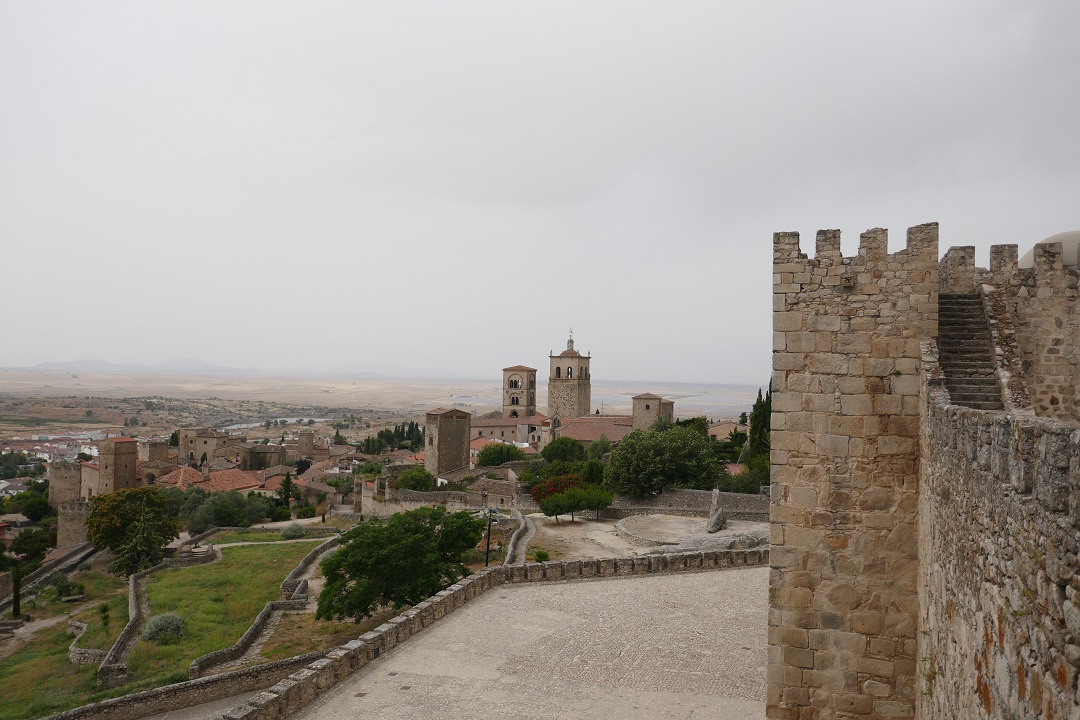
This post contains affiliate links. If you click through and make a purchase, it will generate a small commission for me, at no extra cost for you. Read the full disclosure for more details.
Table of contents
Five historical facts about Trujillo:
1. Settled on a prehistoric granite batholith, Trujillo became a place of relevance during Roman times, when it was known as Turgalium.
2. The Moors arrived in 900 and they built the castle, several cisterns and part of the fortress.
3. Trujillo is closely related to the colonialization of the Americas. It’s the birthplace of Francisco Pizarro (conqueror of Peru) and Francisco de Orellana (the first European to navigate the entire length of the river Amazon), among others.
4. By the sixteenth century, the city of Trujillo expanded beyond its walls. The fortunes made in the Americas by many locals played a major role in Trujillo’s development. Palaces, chapels, and hospitals were built, old buildings were restored.
5. Despite numerous efforts made for over a century, a train line is yet to arrive in Trujillo.
How to get to Trujillo
You can get to Trujillo either by coach or by car.
Getting to Trujillo by coach
Bus company AvanzaBus serves Trujillo from main destinations such as Badajoz, Cáceres, and Madrid. Tickets can be purchased in advance online.
Coach journey duration to Trujillo:
From Badajoz to Trujillo: from 2h to 2h 10min
From Cáceres to Trujillo: from 40min to 45min
From Madrid (Estación Sur de Autobuses) to Trujillo: from 3h 10min to 4h 5min
Bus company Damas serves Trujillo from Extremadura destinations such as Miajadas, Don Benito, and Villanueva de la Serena. Times and prices can be checked on Interbus’s website, but tickets must be purchased on the bus.
Coach journey duration to Trujillo:
From Miajadas to Trujillo: 1h
From Don Benito to Trujillo: from 1h 30min to 2h 5min
From Villanueva de la Serena to Trujillo: from 1h 30min to 2h 5min
Trujillo Bus Station is located in Campo de San Juan, 2, about 15 minutes away on foot from the main square.
Recommended read: A guide to travelling Extremadura by coach
Getting to Trujillo by car
If you come from the north or from the south, your main point of reference will be the A-5/E-90 road. If you’re driving down from Madrid, get off at exit 253 towards Trujillo. If you’re driving from Mérida or Badajoz, you can get off either at exit 259 towards Trujillo (sur) or exit 253 towards Trujillo. Trujillo is also well connected by road to Cáceres via the A-58 road.
Typical car journey duration to Trujillo:
From Cáceres to Trujillo: 35min
From Mérida to Trujillo: 55min
From Badajoz to Trujillo: 1h 30min
From Madrid (Airport) to Trujillo: 2h 50min
Parking in Trujillo: leave the car outside the historical centre and walk. You should easily find free on-site parking in the southern part of Trujillo, particularly along (and around) Avenida de Miajadas. The main square is a short 10-15-minute walk from there. Alternatively, there’s an affordable underground car park (Parking Centro) in Calle de los Pardos, 4Q. It costs €9 for the whole day or €0.02/min but note that it closes from 11pm to 7am.
What to see in Trujillo
Castillo de Trujillo
Trujillo’s castle, sitting atop a hill known as cabeza de zorro (‘fox’s head’), has two different enclosures. The oldest enclosure is a defensive fortress built by the Moors in the ninth century which includes two cisterns and a horseshoe arch.
An enclosing bailey was built a bit later and it includes a sixteenth-century hermitage. You can walk from tower to tower along the walls of this GoT filming location and enjoy some fantastic views. If you visit Trujillo in winter, look out for the snowed-capped peaks of Gredos mountains in the distance.
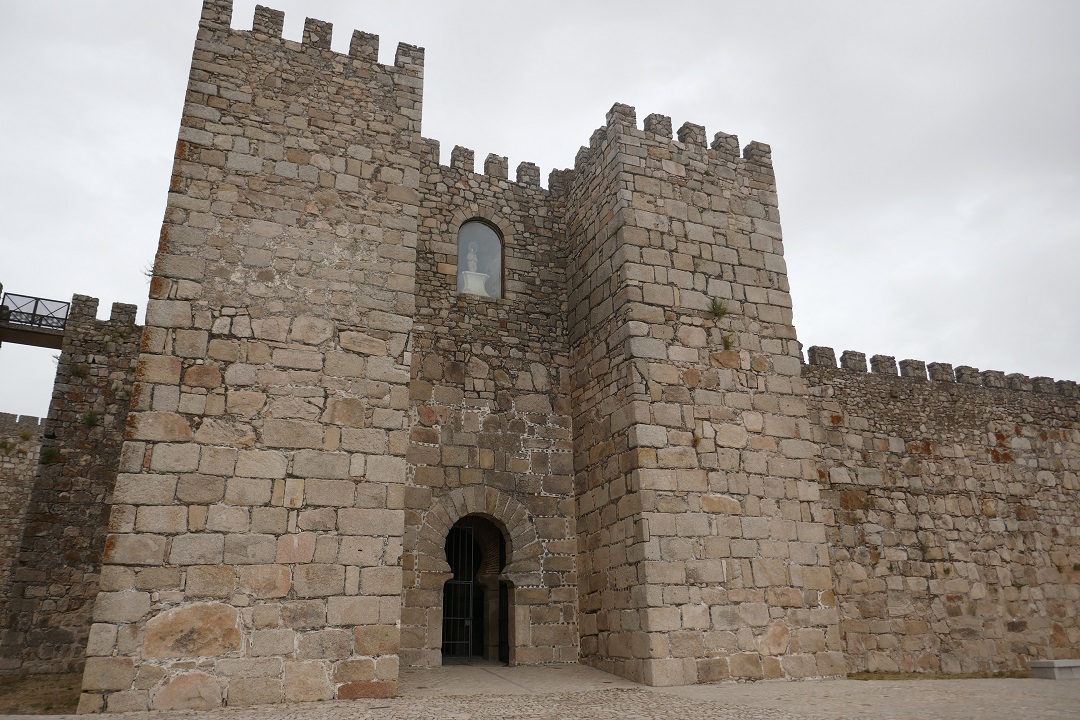
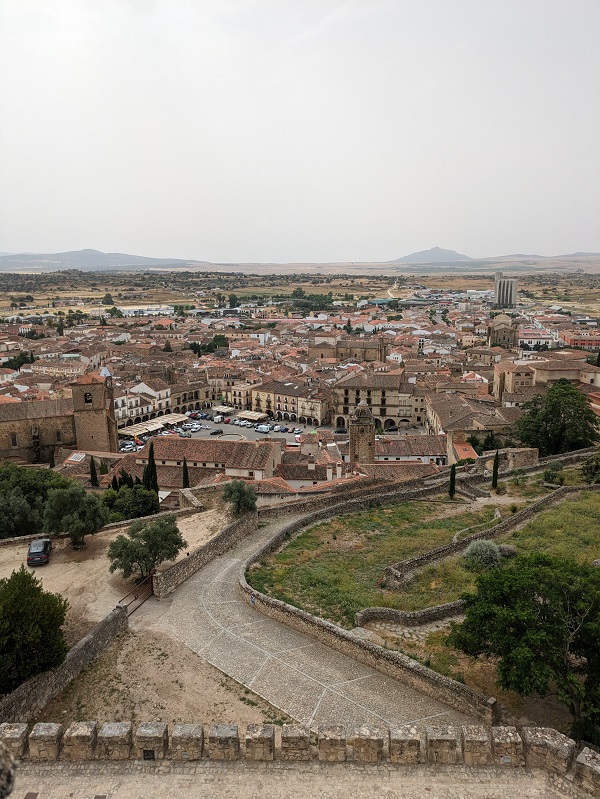
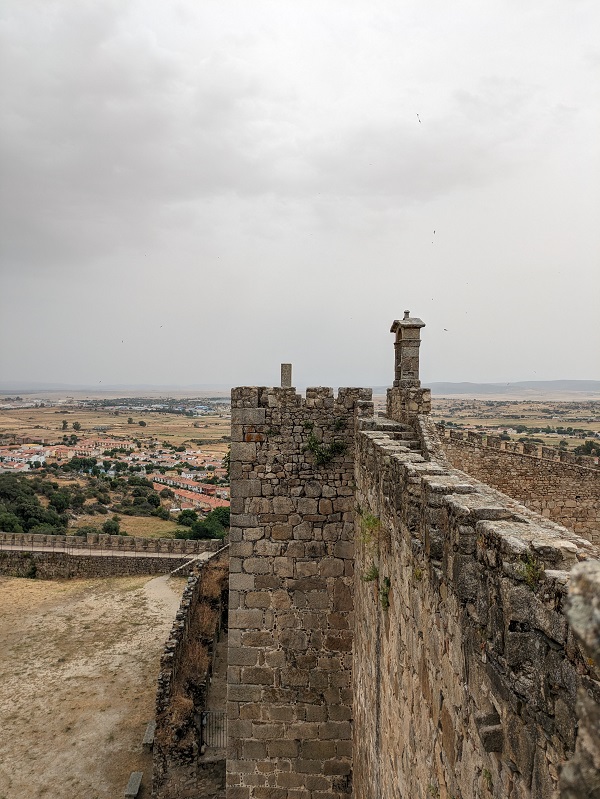
Location: Plaza del Castillo
Tip: If you decide to visit the castle on your own (without a guided tour), aim to get there just before sunset to enjoy the incredible views in the most amazing evening light.
Iglesia de Santa María la Mayor
Built from the remains of a former mosque, this late Romanesque-Gothic church has a beautiful interior, with an imposing main altarpiece featuring 25 paintings, and two towers you can climb. The views from the bell tower are, in my opinion, the second best (only after the views from the castle). Each side of the tower offers a different perspective of the city and the surroundings: the square, the city walls, the castle or the pastureland.
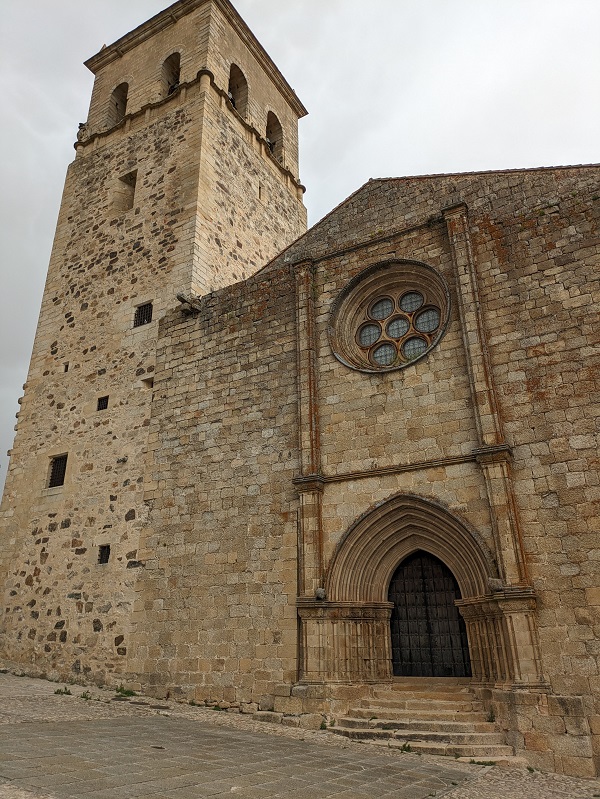
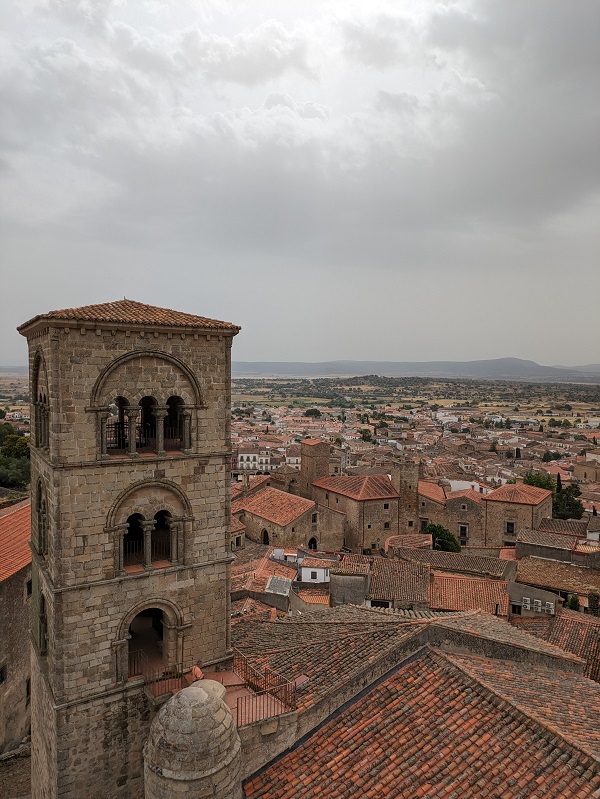
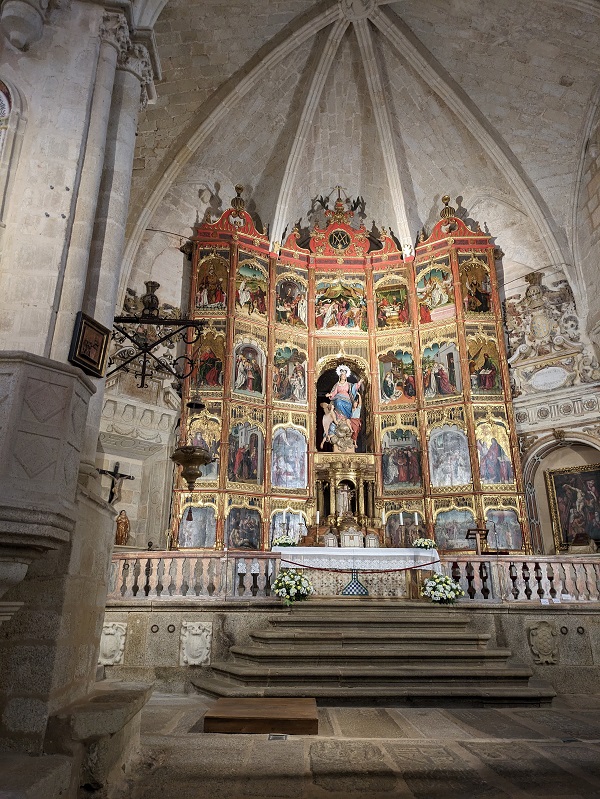
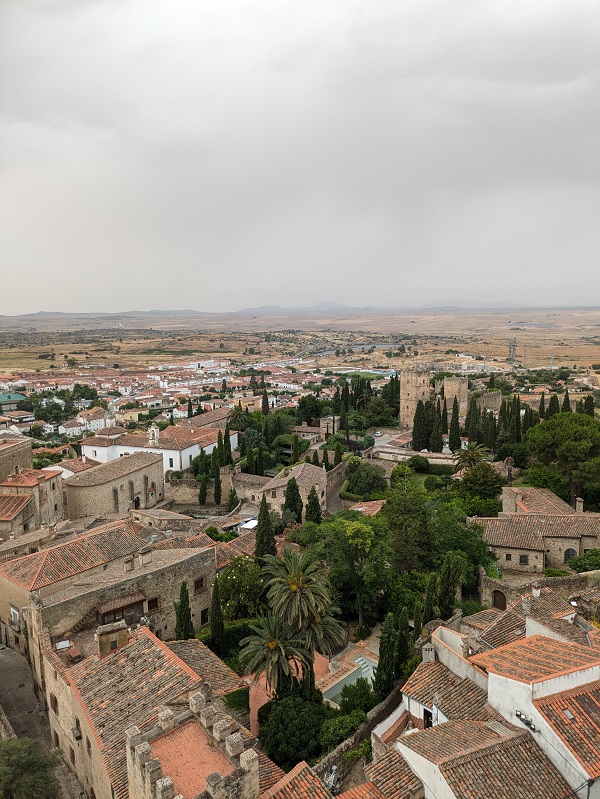
Location: Calle Santa María, 17
In 1972, during some tower reconstruction works, the stonemason in charge carved the emblem of his favourite football team (Athletic Bilbao) on one of the capitals. Despite the huge controversy that naturally followed, it’s still up there.
Casa-Museo de Pizarro
This little museum dedicated to the life of Francisco Pizarro is located in the Pizarros’ original family home, a two-storey house with a patio. The ground floor exhibition is a representation of how local people of a certain social status lived back in the fifteenth century, while the first-floor exhibition is dedicated to conqueror Francisco Pizarro’s life in the Americas.
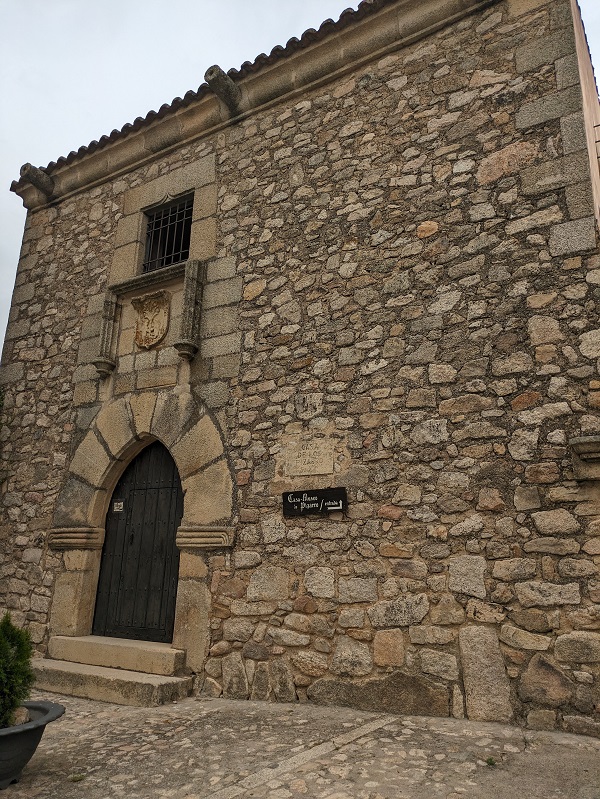
Location: Calleja del Castillo, 1
Aljibe
This tenth-century cistern (aljibe) lies under an unassuming little square. Built by the Moors to provide the local population with fresh water, the cistern has three naves crowned by barrel vaults and is ten metres deep. Look out for the remains of red iron oxide on the walls. It can only be visited in a guided tour.
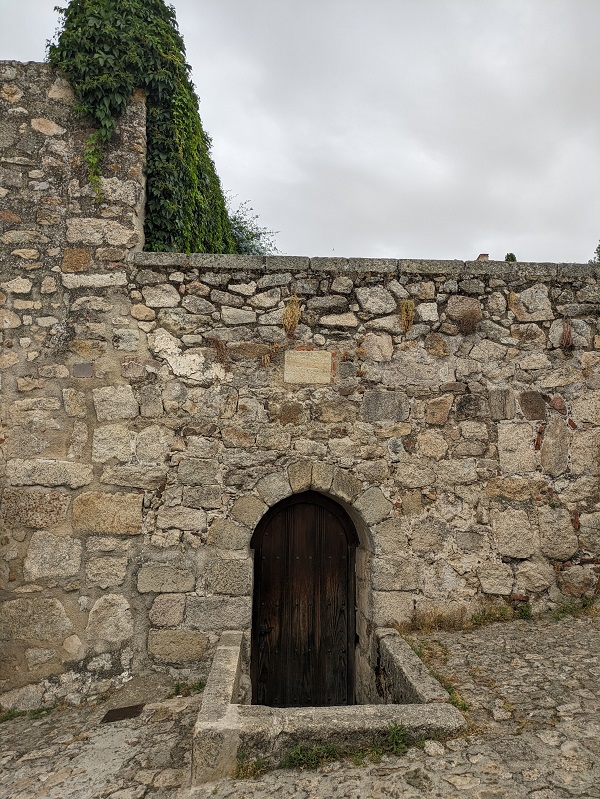
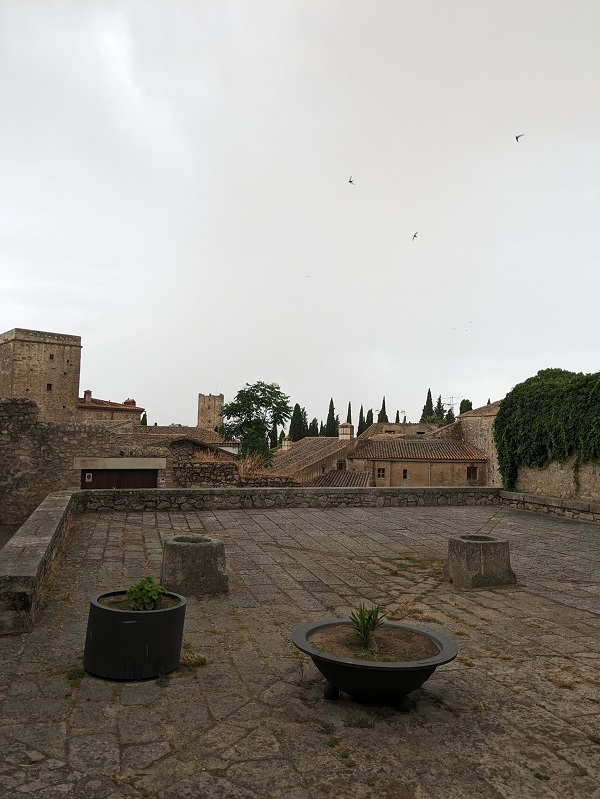
Location: Plazuela del Altamirano
Torre del Alfiler
This Gothic tower is one of the most distinctive symbols in Trujillo’s skyline. Originally part of the Moorish citadel, it was later transformed into the keep of a nearby fortified palace. Today, it’s home to a little visitor centre focused on local and regional history and to several storks nesting on top. The architectural features and the pretty tiles decorating the top of the tower are best appreciated from outside, specially from Subida al Castillo. The views from the tower itself are rather disappointing – visiting the tower seems dispensable to me, unless you buy the combined entry ticket from the local Tourist Office.
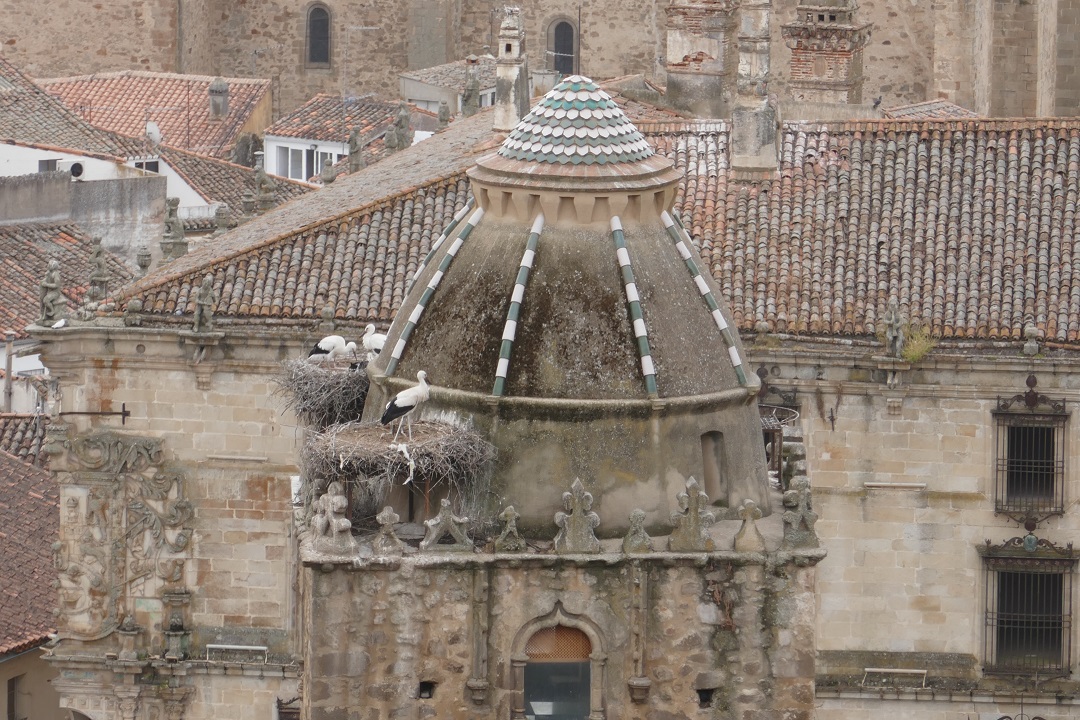
Location: Calle Ballesteros, 7
Visiting the sights above
Opening times: these sights above open every day of the week (in summer, until 15 August) from 10am to 2pm and from 5.30pm to 8pm, and (in winter) from 10am to 2pm and from 4.30pm to 7pm.
Guided tours: Trujillo’s Oficina de Turismo organises 2-hour guided tours (in Spanish) to the Castillo, Iglesia de Santa María la Mayor, Casa Museo Pizarro and Aljibe. They depart every day at 11am and 4.30pm from the Oficina de Turismo. Guided tour tickets also include free entry to Torre del Alfiler / Museo del Traje and Centro de los Descubridores (on your own, without a guide).
Contact information: Trujillo’s Oficina de Turismo is normally located in Plaza Mayor, but the office is currently undergoing renovation works and a temporary office has been set up at the Palacio de la Conquista (corner of Calle Hernando Pizarro with Plaza Mayor). It opens every day of the week (in winter) from 10am to 1.30pm and from 4pm to 7pm and (in summer, until 15 August) from 10am to 1.30pm and from 5pm to 8pm. Contact them ahead of your trip to Trujillo by phone (+34 927 32 26 77 – landline, or +34 621 296 344 – mobile and WhatsApp) to confirm if there are any last-minute changes to the general opening times above or you have any questions.
Tickets: tickets to individual monuments must be purchased at the Oficina de Turismo. Guided tours can be booked in advance online (brace yourself for the automated English translation, although the form section is understandable enough to be filled in); payment must nevertheless be made at the Oficina de Turismo.
Entry fee: individual tickets cost €2 per monument. Guided tour tickets cost €8 per person. Children and teenagers under 13 go free, if accompanied by an adult.
Plaza Mayor
Trujillo’s Plaza Mayor frequently features in travel publications as one of Spain’s most beautiful squares. Dominated by an equestrian statue of Trujillo-born Francisco Pizarro, the main square is where guided tours usually start and end, and where the main local festivities and celebrations take place. Take your time to walk around the square, which is lined with restaurants, public buildings and very grand palaces. Particularly notable are the Palacio de los Marqueses de la Conquista (temporarily home to the Oficina de Turismo), and the Palacio de Piedras Albas.
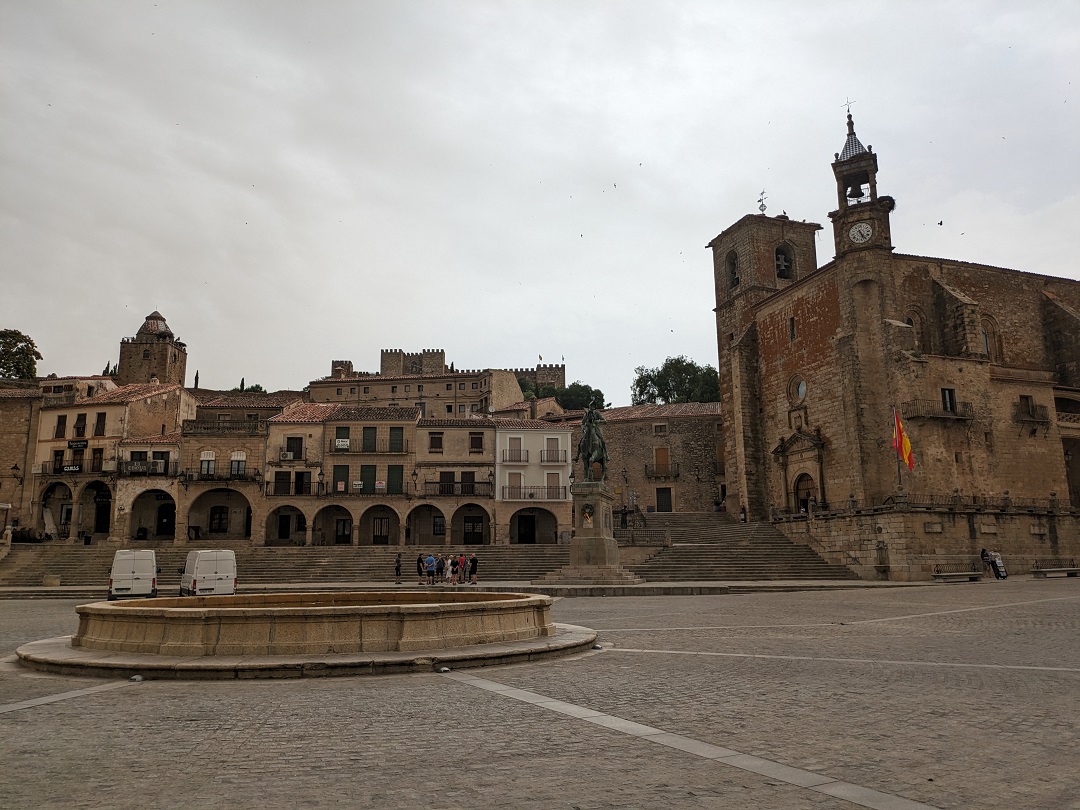
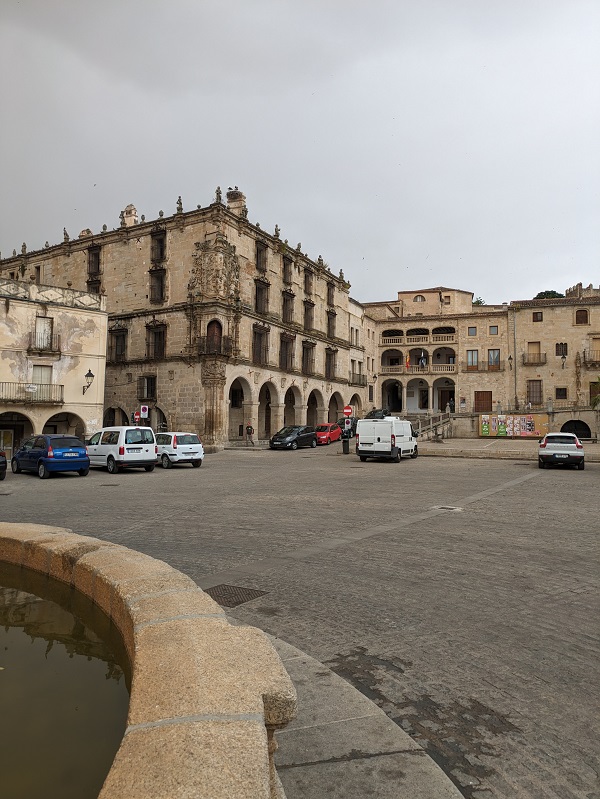
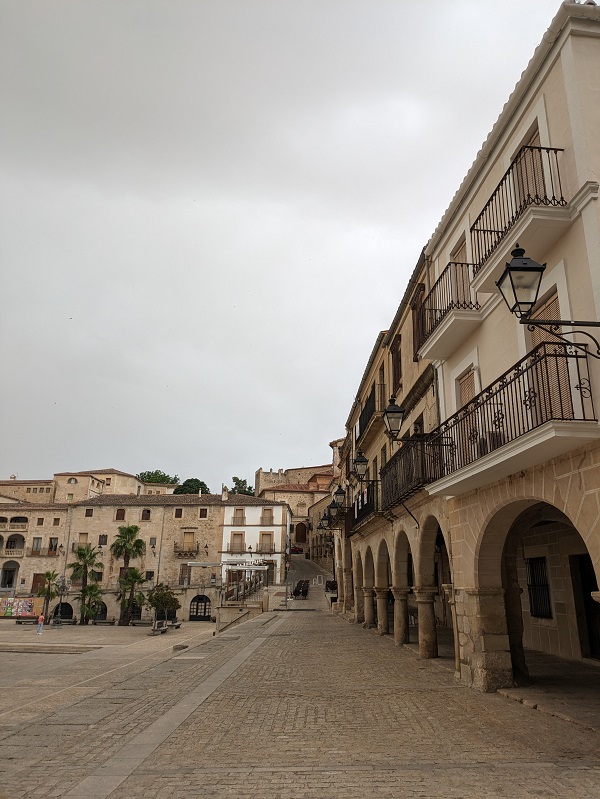
Location: Plaza Mayor
Alberca
This sizeable (12 metres deep) man-made pool was used by the Moors to water their crops, channelling the water through a system of underground pipes.
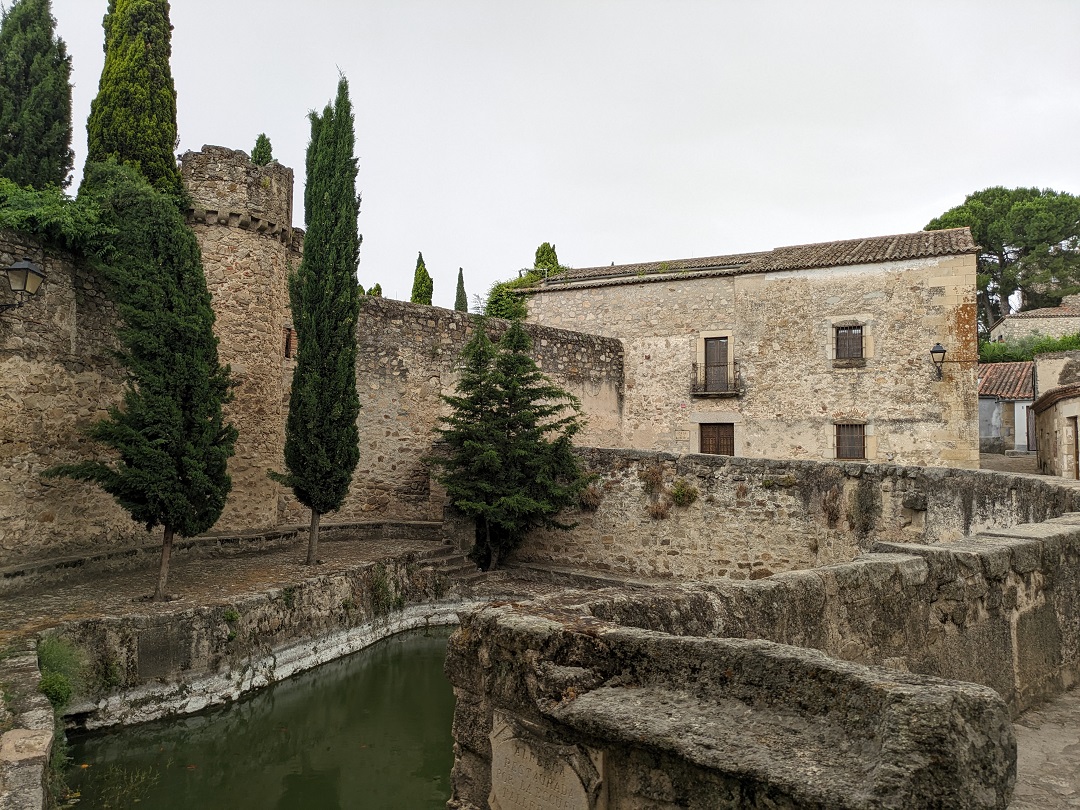
Location: Calle Alberca
Iglesia de San Martín de Tours and iglesia de Santiago
There are religious buildings aplenty in Trujillo. The above-mentioned iglesia de Santa María is a must even if you’re not keen on religious tourism, because the views from the towers are amazing. If you’re keen on religious buildings, you may also want to visit iglesia de San Martín de Tours and iglesia de Santiago.
Iglesia de San Martín de Tours is located on the northeastern side of the main square. Built in the fifteenth and sixteenth centuries, it displays elements of both Gothic and Renaissance styles. Main highlights include a Baroque choir upstairs and a wide balcony with lovely views of the square.
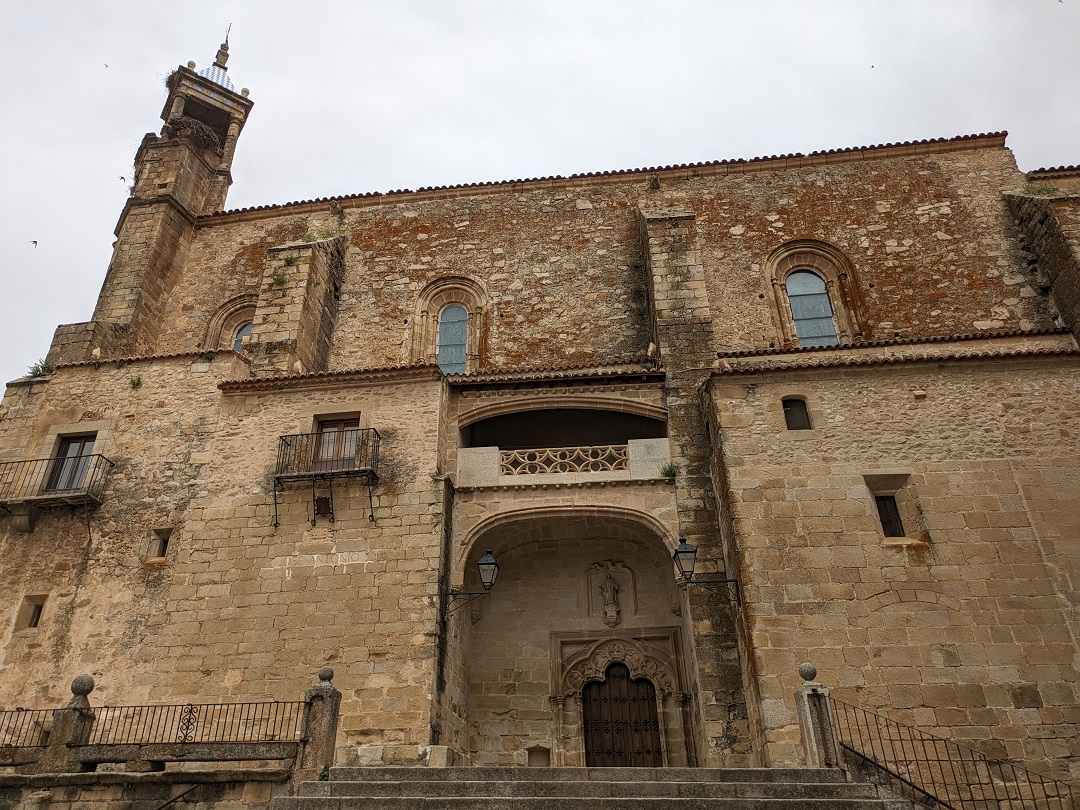
Location: Plaza Mayor
Iglesia de Santiago is a small twelfth-century church located to the west of the main square. Highlights include Romanesque vaulted ceilings, a fourteenth-century Jesus Christ statue and good views from the tower.
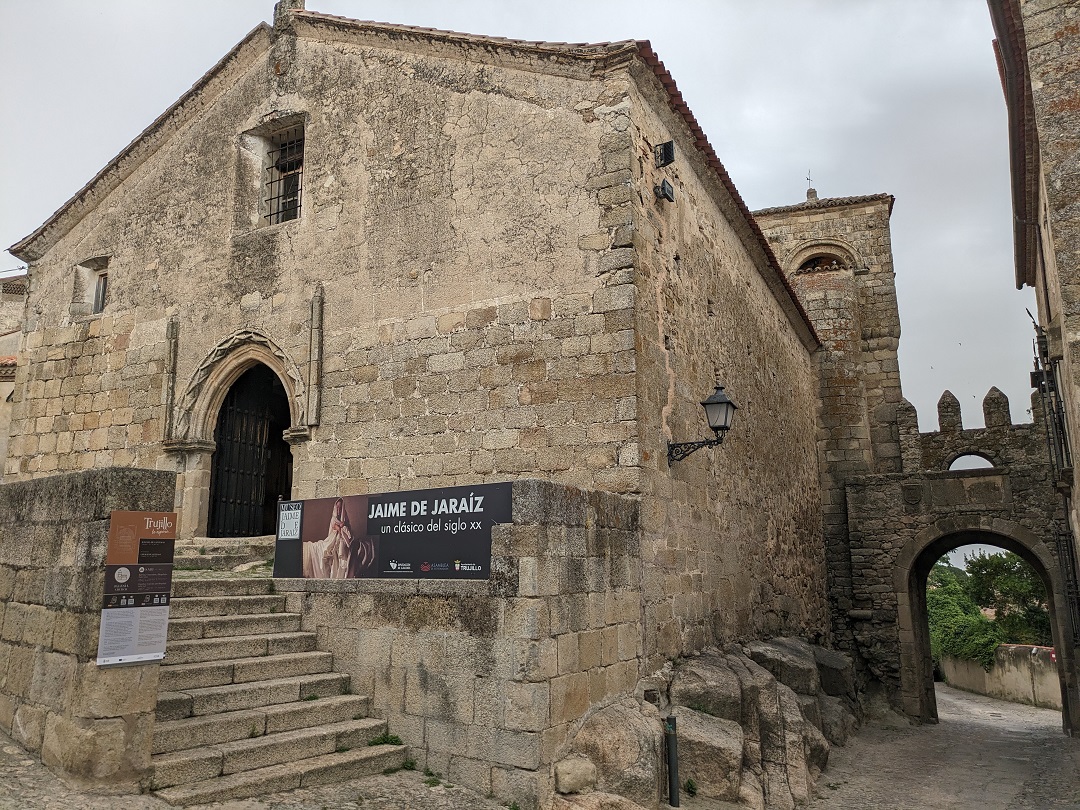
Location: Plaza de Santiago
What to do in Trujillo
Look for the city gates
The city gates will give you a good sense of the size of the old walled city of Trujillo as well as provide you with the perfect framing for pretty pictures. Originally, seven gates gave access to the city, but only four of them remain today:
Puerta de San Andrés, in Calle Cuesta de San Andrés, (coordinates: lat. 39.459354, Long-5.884342);
Puerta de Santiago, in Calle Ballesteros (coordinates: Lat. 39.460622, Long. -5.883073);
Puerta de la Coria, in Calle Puerta De La Coria (coordinates: Lat. 39.461419, -5.884925);
Puerta del Triunfo, in Plaza Cementerio (coordinates: Lat. 39.459020, Long. -5.886275).
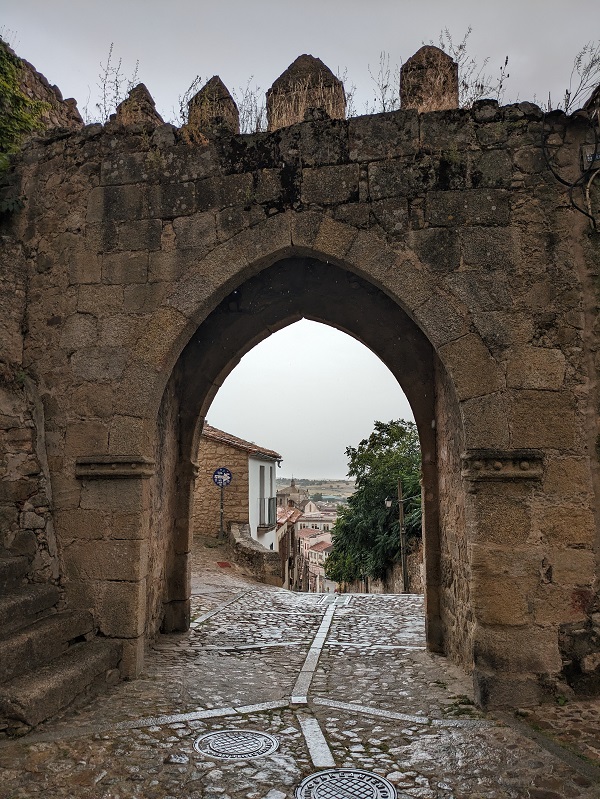
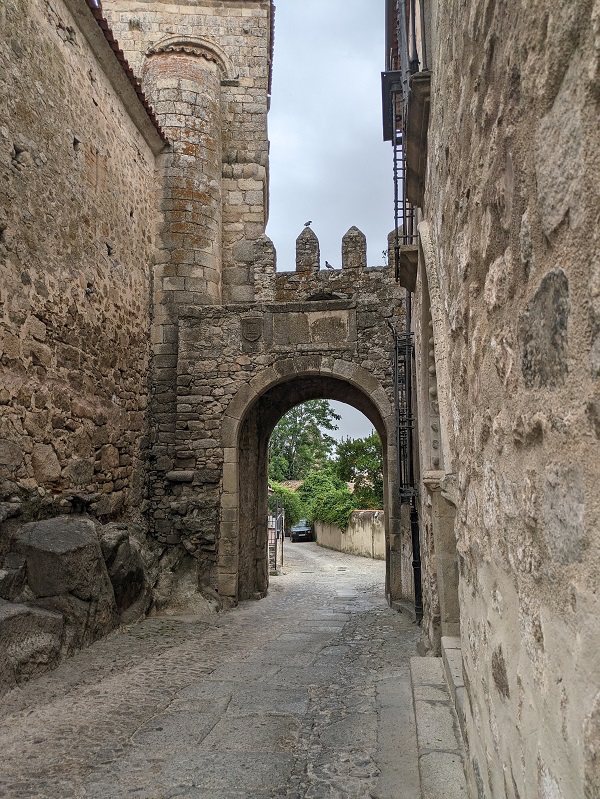
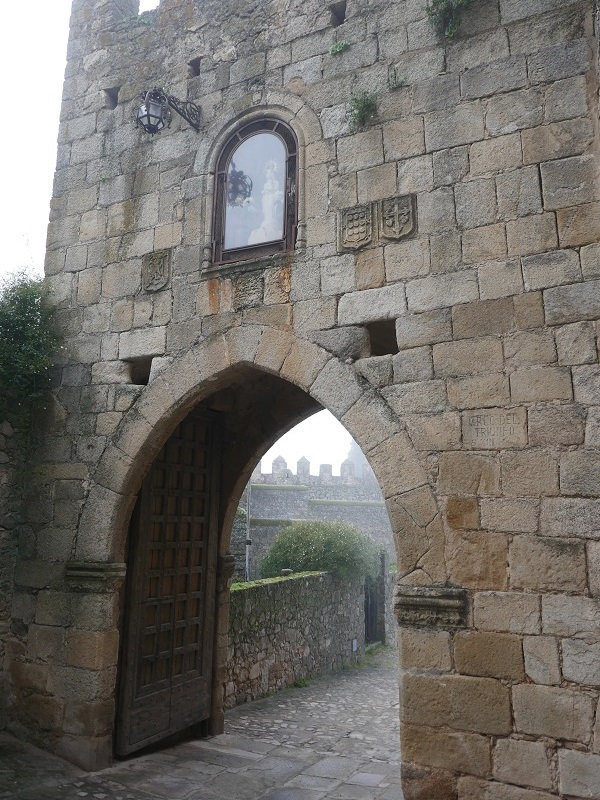
Wander around
Leisurely walk around Trujillo and take your time to admire the architectural details of the numerous fine buildings you’ll find along the way. These are some of the most notable buildings you may want to look out for:
Alcázar de los Bejarano, a fifteenth-century Gothic palace in Plaza del Cementerio, 5;
Palacio de Chaves-Sotomayor, a fifteenth-sixteenth-century Gothic and Renaissance palace located in Cuesta de la Sangre;
Palacio de Carvajal Vargas (or Ducal de San Carlos), a sixteenth-seventeenth-century Renaissance and Baroque palace in the corner of Calle García de Paredes with Calle de Mingo de Ramos;
Palacio de Luis Chaves «El Viejo», a fifteenth-century fortified palace in Calle Ballesteros;
Palacio de Juan Pizarro de Aragón, a seventeenth-century Baroque palace currently home to a theatre and the local historical archive in Plazuela de Juan Pizarro Aragón.
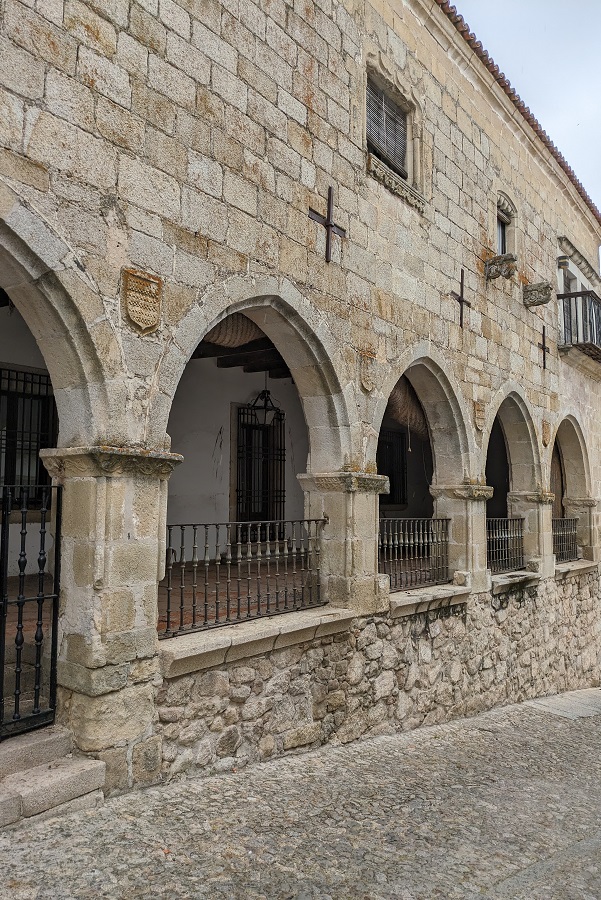
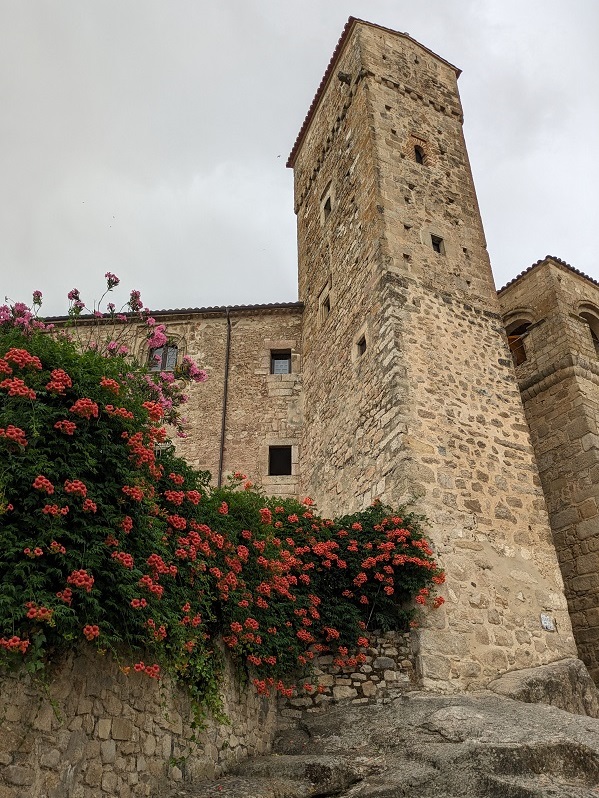
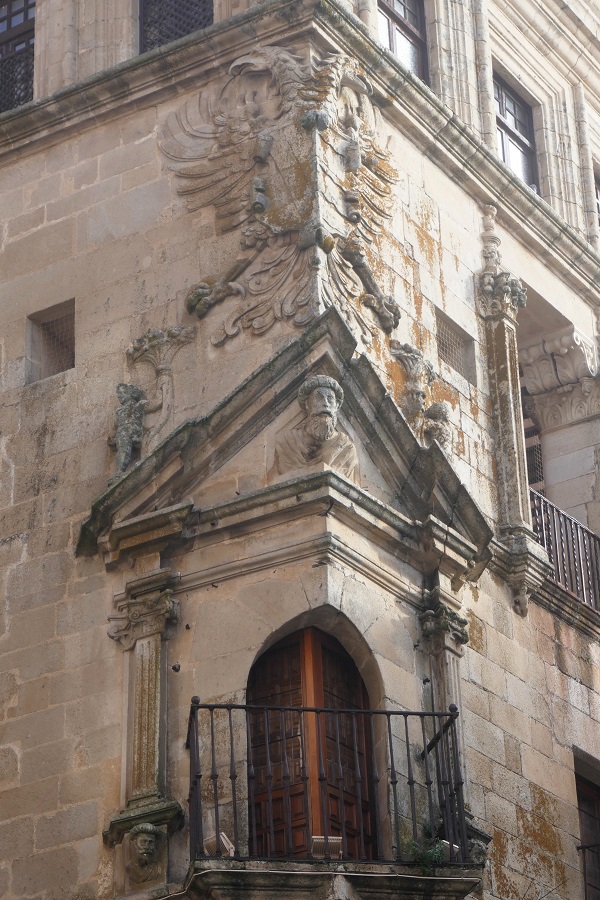
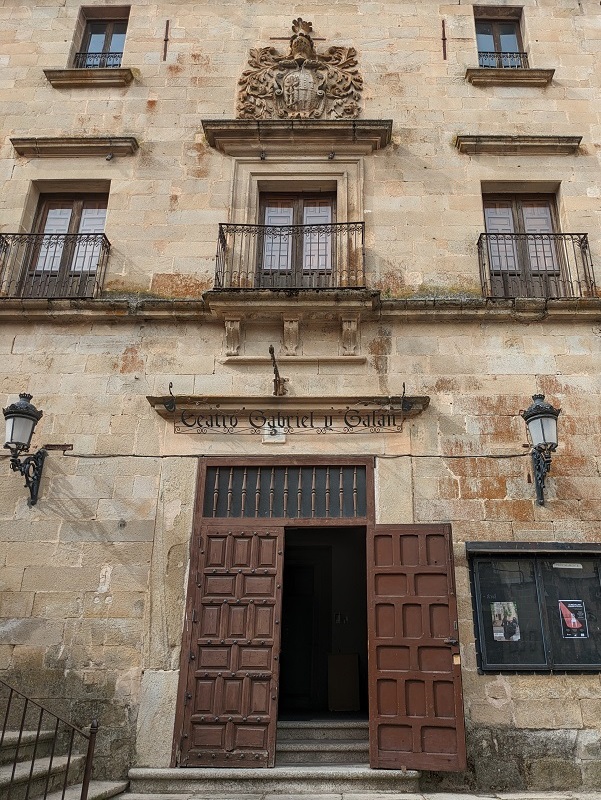
Stay or eat at Parador de Trujillo
Paradores are a state-sponsored nationwide chain of hotels located in historical buildings. Parador de Trujillo, located in a former convent with two beautiful cloisters, is a good accommodation option if you’re looking for comfort and character.
But you don’t have to stay there to see its facilities. Paradores have good restaurants serving regional food with a modern twist, and Parador de Trujillo is not an exception, so go ahead and book lunch or dinner. Or simply walk in and have a coffee in one of its cloisters.
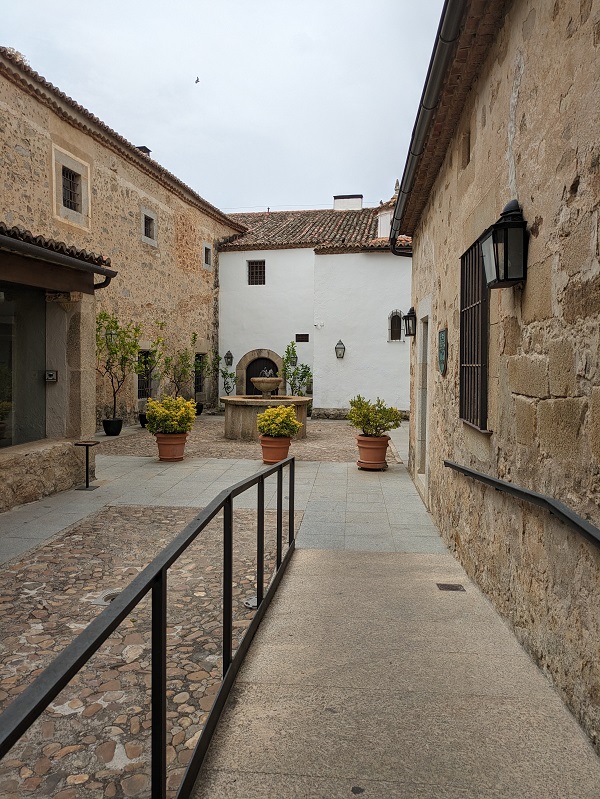
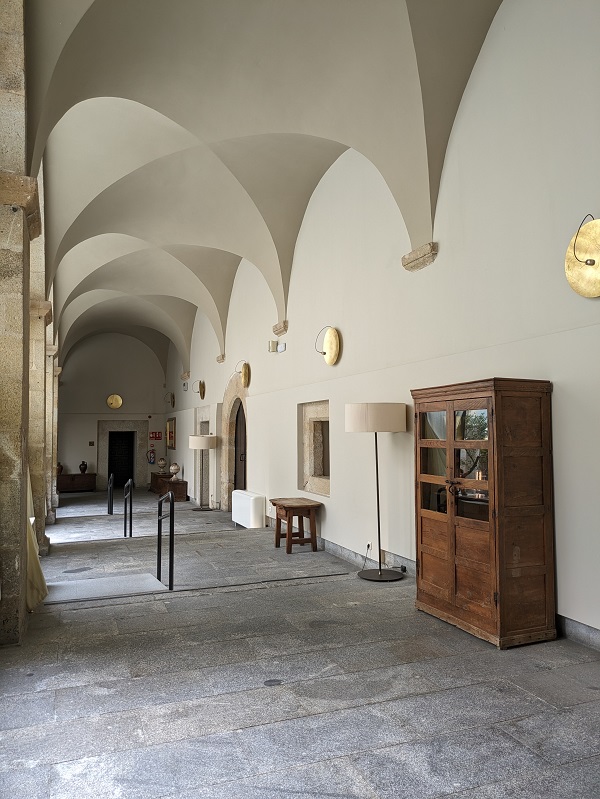
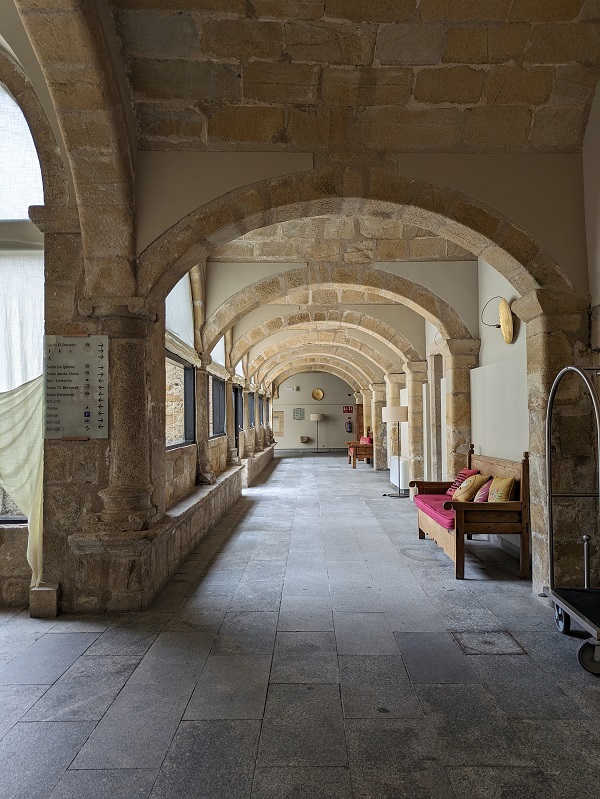
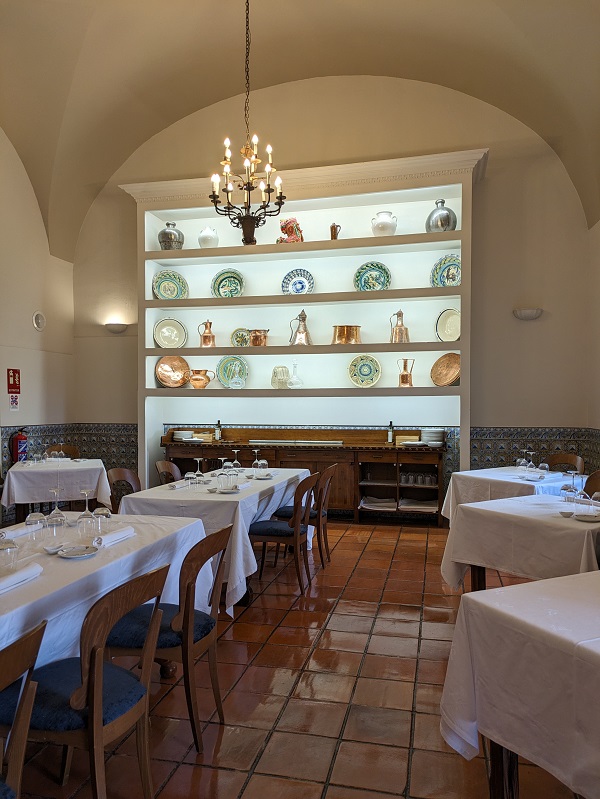
On my last visit, I travelled as a group of three and these are the dishes we had:
• macerated carrot (complimentary);
• bread with paprika and olive oil (complimentary);
• Ibérico ham croquetas to share;
• baked cod gratin with ratatouille-style vegetables;
• beef cheeks with roasted sweet potato;
• retinta (indigenous breed) sirloin steak with patatas revolconas (a sort of loosely mashed potatoes with paprika);
• acorn cake served with vanilla ice-cream.
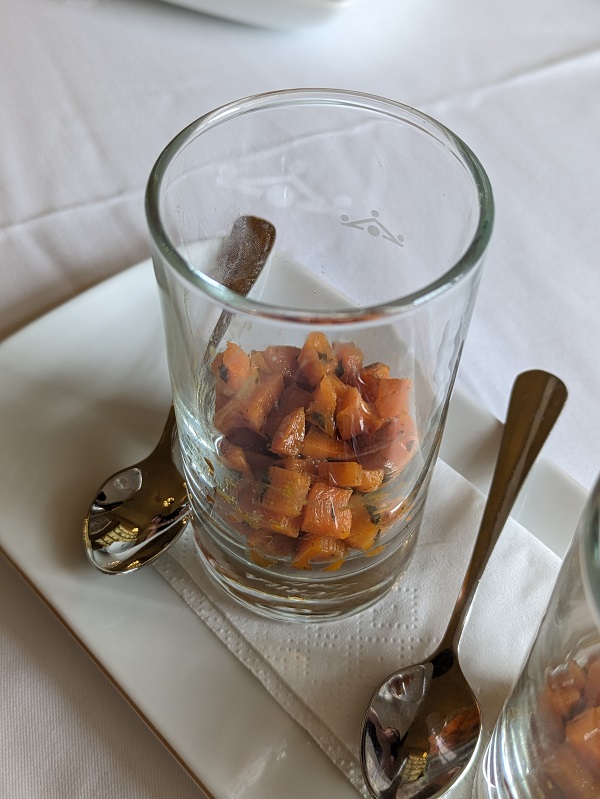
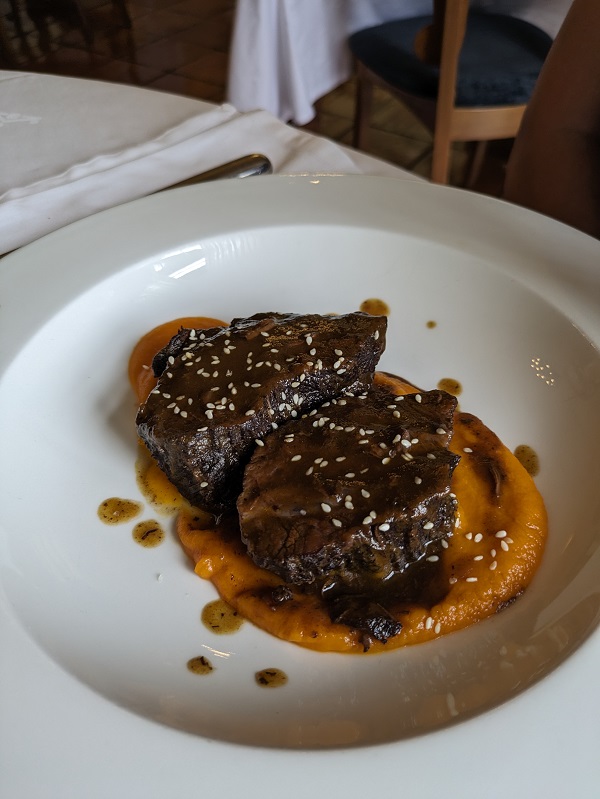
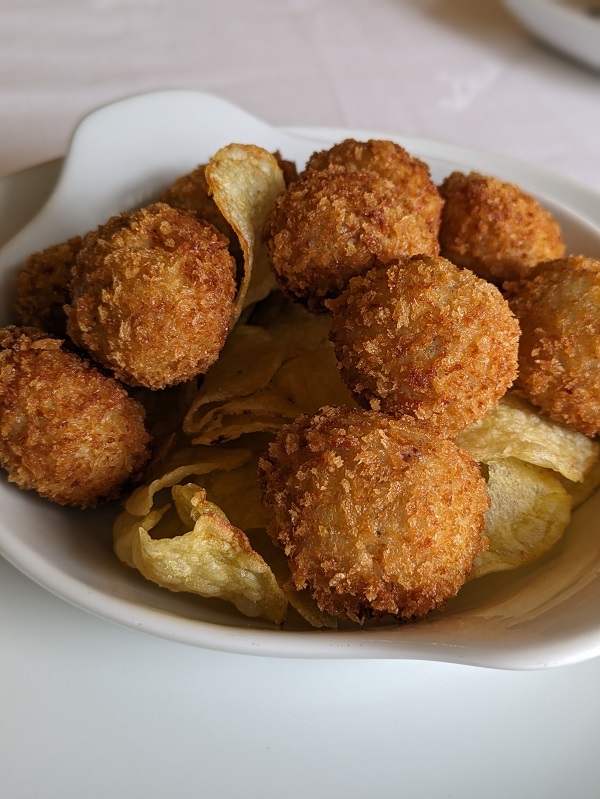
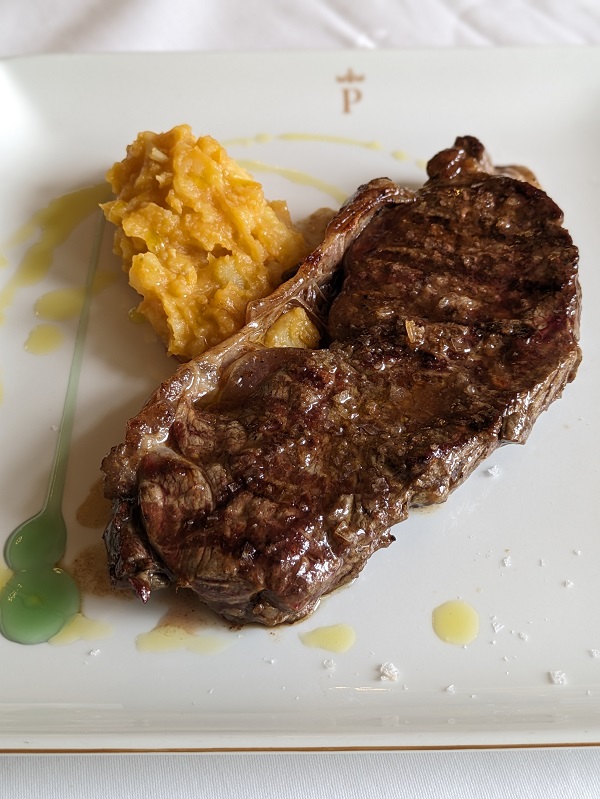
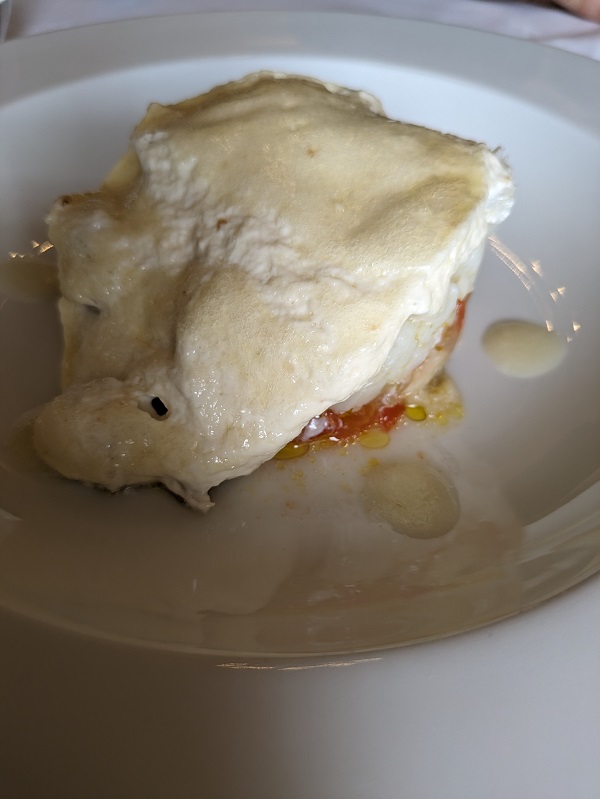
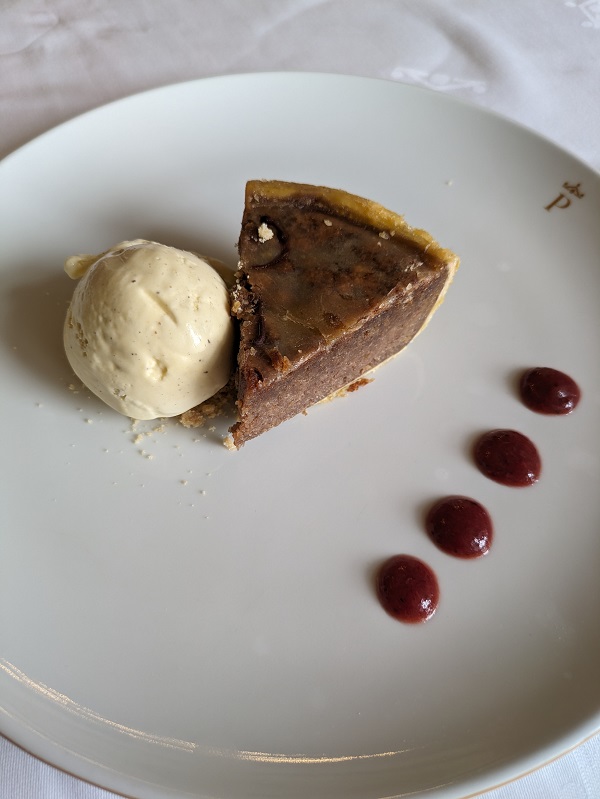
Location: Calle Santa Beatriz de Silva, 1 (main entry from Calle Paredones de Santa Clara, 2)
Things to do near Trujillo
Walk up to Pico de San Gregorio, in Santa Cruz de la Sierra
Santa Cruz de la Sierra is a small village only a fifteen minute drive from Trujillo. Ruta del Risco Grande is a 6-kilometre linear walk starting at the southern end of the village (past the convent) and ending at the top of a hill at 844 metres high. Along the way, you’ll see several ponds and the remains of an old irrigation system, a cemetery and former village. It takes less than three hours in total to complete it. I’ve done it twice myself. Highly recommended for winter time.
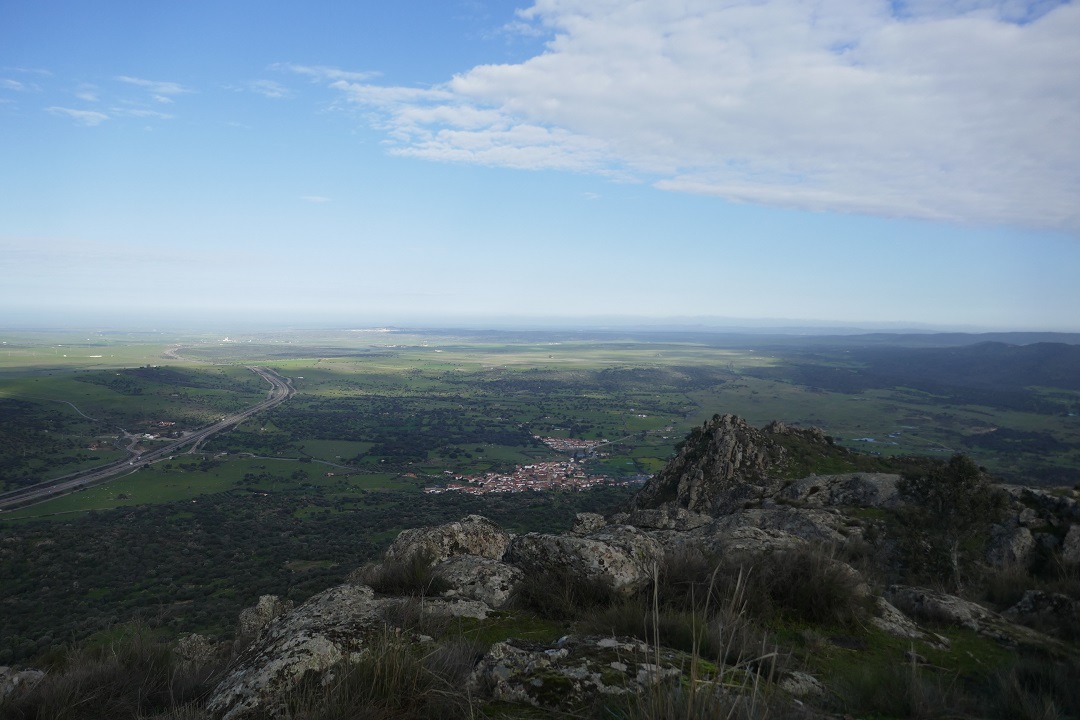
Location: Santa Cruz de la Sierra (Coordinates for the starting point: Lat. 39.334398, Long. -5.846106)
Map of Trujillo and surroundings
Find all the places mentioned in this article on the map below.
When to visit Trujillo
Trujillo is a good place to visit at any time of the year, since monuments open all year round, but there are some things to bear in mind when planning your trip:
Visiting Trujillo in summer: despite its small size, Trujillo has quite a lot to see. I personally avoid sightseeing-heavy destinations from late June to mid-September. Bear in mind that in summer monuments close from 2pm to 5.30pm and walking around (and up, and down) at 35 or even 40 degrees won’t be particularly enjoyable.
Visiting Trujillo over Easter: originally a winter farewell celebration, Chíviri is basically a huge party taking place on Easter Sunday (although it actually starts on Saturday evening). It draws thousands of people from all over Extremadura, some of them wearing traditional costumes; they gather in the main square and spend the day eating, drinking and dancing to some folk tunes blasting from a big stage set up for the occasion. The square is chock-a-block with people, so it may not be the ideal time to visit, unless you want to join the party.
Recommended read:
This content is protected by copyright and belongs exclusively to Irene Corchado Resmella. To know exactly what this means, read the 'Copyright' section in the Website terms of use.

Irene Corchado Resmella
Hi! I’m Irene (/ee-REH-neh/). Long since settled in the UK, I explore my Spanish home region of Extremadura with an inquisitive mind, a sharp eye, and the duality that comes with being both a local and a visitor. Then I write about it here to help you discover this beautiful yet overlooked part of Spain. If you have any questions after reading this article, submit a comment below! Read more about me.

Hola Irene,
First I want to tell you how impressed I am with your website and its incredible detail and thoroughness! My husband and I have been talking about a trip to Extremadura for a few years, and we are finally going to make it happen in October. We are US expats currently living in Porto. We plan to fly to Madrid and then make our way to Caceres. We were thinking 4 nights in Caceres with day trips to Plasencia and Trujillo, then 3-4 nights in Merida with day trips to Zafra and Llerena. From there we’re thinking to spend a full day in Badajoz before taking a bus to Evora and eventually heading back to Porto. Does this plan sound feasible to you? I have a few questions and hope this is the correct space to ask them. If the train or bus schedules force us to leave very early (7 am) , will we find anything open when we arrive? I’m thinking just a cafe until the cities wake up. Second, will things be open on October 12 given that it’s Dia de la Hispanidad? And finally, are there any tour agencies that you would recommend that offer transport as well as a guided tour? The usual sites that I refer to only offer tours within the cities, leaving us to find our own way there. Lots of questions, I know, but you seem to be the best resource for Extremadura. Thank you in advance!
Hello Kim,
Thanks a lot for your kind commentsabout the website. I’m pleased to read such positive feedback. Let me share my thoughts on your travel plans:
Duration: I think your plans sound very good. Cáceres and Mérida are probably the best bases to discover other essentials on day trips and I think you got that right. Cáceres deserves a 1.5 day (a full sightseeing day and a second, more relaxed day, or just two days to take it easier), and Mérida definitely requires two full days of sightseeing. One day will suffice for the other places.
Transport: you should be able to reach all the places you mentioned by public transport. You can do Madrid-Cáceres, Cáceres-Plasencia, Mérida-Badajoz, and Mérida-Zafra on the train, and Cáceres-Trujillo by coach. The Mérida-Llerena train journey is more tricky, because there is only one service each way a day and the timings will not suit because the return train is in the early afternoon. That said, bear in mind that there are fewer train and coach services during the weekend (sometimes only one a day, depending on the route). So public transport might not suit for some places, depending on the day of the week. If, by any chance, you drive, hiring a car in Madrid would give you the most flexibility. Alternatively, you could perhaps hire one in Mérida and use it to go to Zafra and Llerena – it will allow you to stop and see other places along the way. I tend to travel by car and public transport myself, so I cannot recommend companies offering the sort of travel package you mention, I am afraid.
Opening hours: generally speaking, bars in towns don’t open until 9am. The ones that open at 8am or so will normally be located in the cities (Badajoz, Cáceres, less so in Mérida), close to office buildings, or in the outskirts and off the main road in and out of town. Bus stations also have ‘cafeterías’ but I’d only go there if there was nowhere else to go and really really needed to, but I’d prefer to buy some stuff in a supermarket the day before and have that in the morning and then have a coffee later on.
12 October: monuments and museums should be open, but double-check any guided tours with the local tourist boards and book in advance, since it’s a popular day to travel. Shops would normally close on Sunday, particularly in towns, but due to the holiday, you will most likely find them open (specially those more aimed at visitors, selling local products and souvenirs).
I hope this helps. Have a lovely trip!